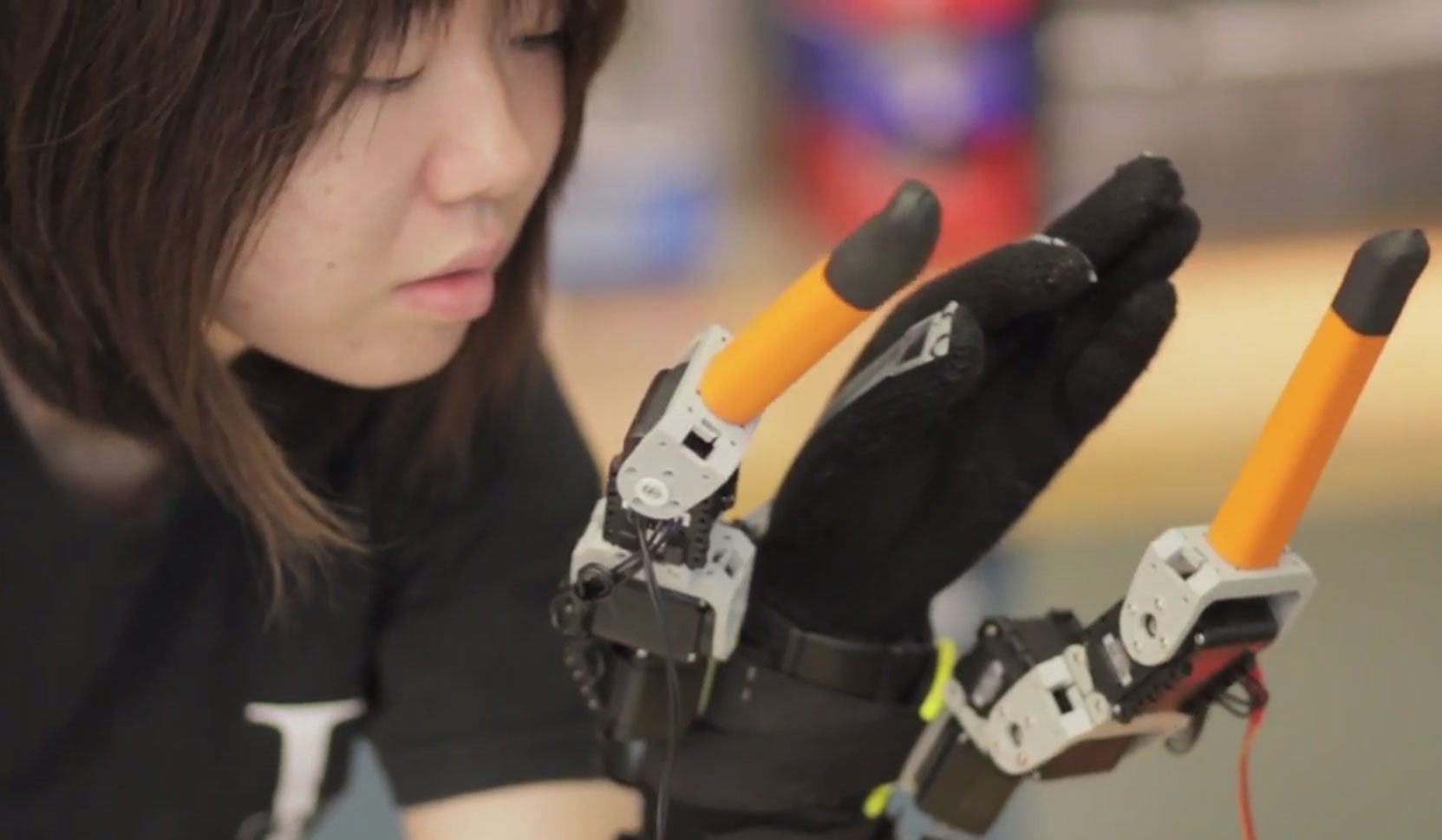'Seven fingered' robotic glove gives your hand a helping hand
A pair of 'extra fingers' are mounted on the wrist to let wearers perform two handed tasks - like stirring a drink or opening a container - with one hand

Your support helps us to tell the story
From reproductive rights to climate change to Big Tech, The Independent is on the ground when the story is developing. Whether it's investigating the financials of Elon Musk's pro-Trump PAC or producing our latest documentary, 'The A Word', which shines a light on the American women fighting for reproductive rights, we know how important it is to parse out the facts from the messaging.
At such a critical moment in US history, we need reporters on the ground. Your donation allows us to keep sending journalists to speak to both sides of the story.
The Independent is trusted by Americans across the entire political spectrum. And unlike many other quality news outlets, we choose not to lock Americans out of our reporting and analysis with paywalls. We believe quality journalism should be available to everyone, paid for by those who can afford it.
Your support makes all the difference.Researchers at MIT have figured a way to give people a pair of extra fingers as an “extension of the human body” to help with everyday tasks.
The prototype technology is worn around the wrist, with flexible sensors on the hand used to relay information about the wearer’s movements to the ‘extra fingers’ (they look more like a pair of outsized rubber insect antenna).
“You do not need to command the robot, but simply move your fingers naturally," said Harry Asada, the Ford Professor of Engineering in MIT’s Department of Mechanical Engineering. "Then the robotic fingers react and assist your fingers.”
“Every day, we use various tools, say a knife and fork and we drive a car and, if we use these tools for a long time, you see that those tools are just an extension of your body," said Asada.
A video demonstrating the technology shows how the extra fingers (located on the far sides of the hands – to the left of the little finger and to the right of the thumb) could be used to grip objects one handed while the wearer’s real fingers perform a task – say, stirring a cup of coffee, opening a container or opening a letter.
“With the assistance of the SR fingers the users can grasp objects that are usually too difficult for them to do with a single hand. For example objects that are too large, too heavy or the surface of the object is too hot or too cold,” said a researcher.
MIT says the next step is to slim down the technology and that they hope it could be used to restore extra mobility to the disability or elderly.
The university has not just been on working on fingers either, with engineers also developing a pair of ‘supernumerary robotic limbs’ that can be fitted over the shoulders or on the waist to help brace the wearer when carrying out construction tasks, for example.
Join our commenting forum
Join thought-provoking conversations, follow other Independent readers and see their replies
Comments